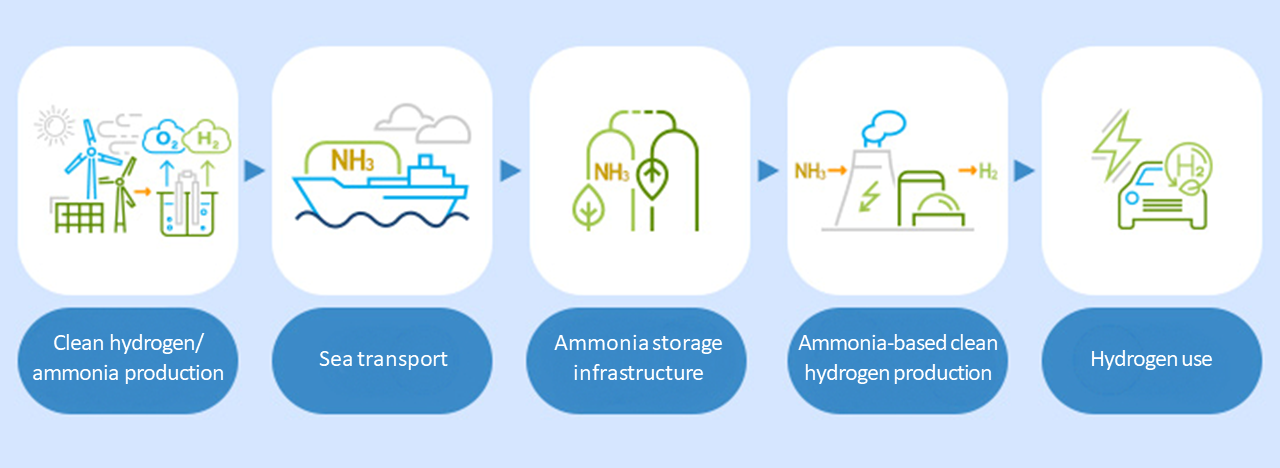Amid growing interest in the hydrogen economy as a clean alternative to fossil fuels, Samsung C&T has taken another step towards building its related portfolio.
The company’s Trading & Investment Group signed an agreement with shipping company KSS Line on Nov. 10 that will see them cooperate on a key part of the clean hydrogen value chain.
The clean hydrogen solution
Hydrogen is a very promising energy source because it releases only water vapor when burned for fuel or energy purposes. The problem is, you have to produce and prepare the hydrogen in a clean manner in order for the means to justify the ends. For instance, when hydrogen production itself relies on fossil fuels, it is seen as counterproductive.
However, when hydrogen is extracted from ammonia, it can become so-called “green hydrogen” – a clean solution to the fossil fuel problem. Ammonia is also an important part of the clean hydrogen value chain because it can be used as a practical liquid carrier for transportation over long distances by sea.
As Korea’s only ammonia carrier operator, KSS Line will offer its accumulated expertise to help Samsung C&T transport ammonia by sea so that it can then be stored at its destination before being converted into clean hydrogen for use as an energy or fuel source.
Under their agreement, Samsung C&T and KSS Line will cooperate in securing logistics competitiveness, including using eco-friendly fuel propulsion ships and jointly working to find the optimal methods for shipping ammonia.
The bigger picture for clean hydrogen
Samsung C&T has long been exploring various business opportunities throughout the development of the clean hydrogen value chain. Its agreement with KSS Line is the latest in a series of strategic partnerships with companies holding capabilities at each step of the chain.
Based on its global network, trading, and domestic and overseas business development capabilities, Samsung C&T aims to develop the entire clean hydrogen supply chain, from developing overseas clean hydrogen production projects to connecting Korean customers. As Korea more generally seeks to bolster its hydrogen economy, the country’s number of hydrogen-powered vehicles is expected to climb from just over 19,000 in 2021 to 30,000 by 2030, while hydrogen is also set to meet over 7 percent of national power output by 2036.
As an extension of its coal-exit declaration in 2020, Samsung C&T also recently announced its “2050 Net Zero” plan aiming to achieve 100 percent renewable energy by 2030 and net zero carbon emissions by 2050. Its net zero measures include the Trading & Investment Group’s development of green energy projects such as hydrogen and battery recycling among other business activities.









